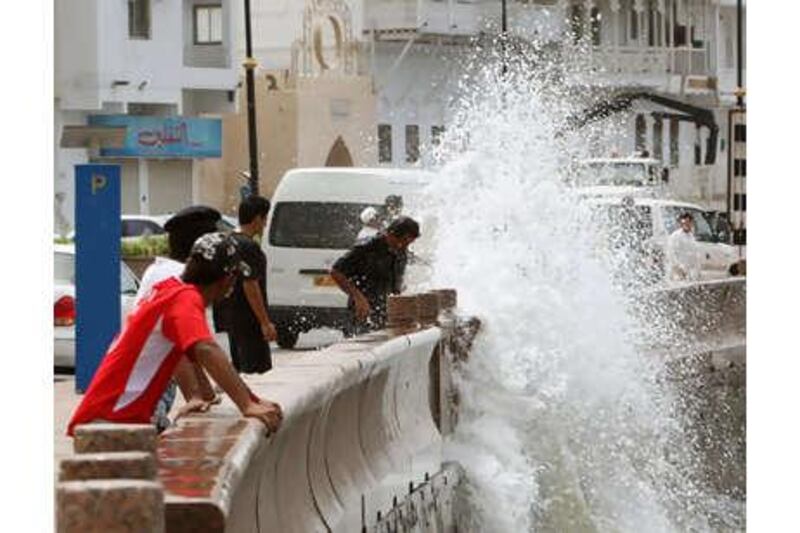DUBAI // Unconcerned by the reports of high winds, surfers were packing their boards yesterday, ready to make the most of a rare opportunity to ride big waves in Oman and the UAE. Coastal warnings have been issued for Cyclone Phet, which is expected to hit the Arabian Peninsula today. "For as long as we have been surfing here, we have never come across a swell like this," said Scott Chambers, the director of Dubai Surf School in Umm Sequim. "It is a unique opportunity to get out there and catch those waves."
He will be part of a convoy that will track the waves, starting from Fujairah today and finishing by Tuesday at A'seelah, about three-and-half hours' drive south of Muscat. Today, south of Muscat, the cyclone will reach a Category Four, with wind speeds of up to 212kmh. By the time the winds reach Fujairah's more sheltered coastline, they are expected to have slowed to 37kmh to 46kmh, with gusts of up to 64kmh.
Even there, though, the storm will generate waves as high as four metres. Most of the time, surfers in Dubai have to make do with little more than a metre. "We are not too concerned about the dangers of it because we understand what it can do," said Mr Chambers. "We will wait until Saturday to go to Oman. Oman is susceptible to flash floods and would be very difficult to drive in. This storm is going to be ripping up trees and turning over everything, so we don't want to be caught in that."
Dangerous underwater currents, known as rips, are expected to be at their most dangerous and an inexperienced surfer could easily be caught in them. "It can drag them out, and if they don't know what they're getting themselves into, they can panic and tire themselves out by paddling against it. It will be dangerous if you don't know what you are doing." Jason Smith, of Surf Dubai, also based in Umm Sequim, said a group of about 10 surfers would be visiting secluded bays along Fujairah's coast.
"If you know what you're doing and know where the danger zones are it'll be fine. Also if we know where the currents are then that's fine. "There's no way we'd paddle out to somewhere we don't know what's going on." The group will also take a jet ski. "We expect the surfing to be really rough and will have to do a lot of paddling to get out to the waves," said Mr Chambers. "The jet ski will be able to pull us out past that and save our energy for paddling in with the wave.
"Anywhere else in the world you get an ocean that generates the waves, so here the waves are generated by the wind. It is too flat in the summer in Dubai so you try to chase something else." Abdel Elecho, the manager of the Dubai Surf Shop in al Barsha, was getting an early night last night, ready to be on the road by 4am today. "We want to be down there by first light," he said. "A few of my friends from the Philippines and I are going to Fujairah for the whole day, and hopefully back again on Saturday for more."
Mr Elecho is not a stranger to the swells produced by cyclones. "Usually we surf before and after the cyclone in the Philippines but never during, because it gets really messy. "You'd want to know what you are doing. This is not for a novice. Waves like this don't come often. We have no choice only to surf it." The last cyclone of this magnitude was Cyclone Gonu, which hit the coast of Oman in 2007.
It tore though the country, flooding the entire coastline, causing around US$4m (Dh14.6m) of damage and killing at least 49 people. @Email:eharnan@thenational.ae






